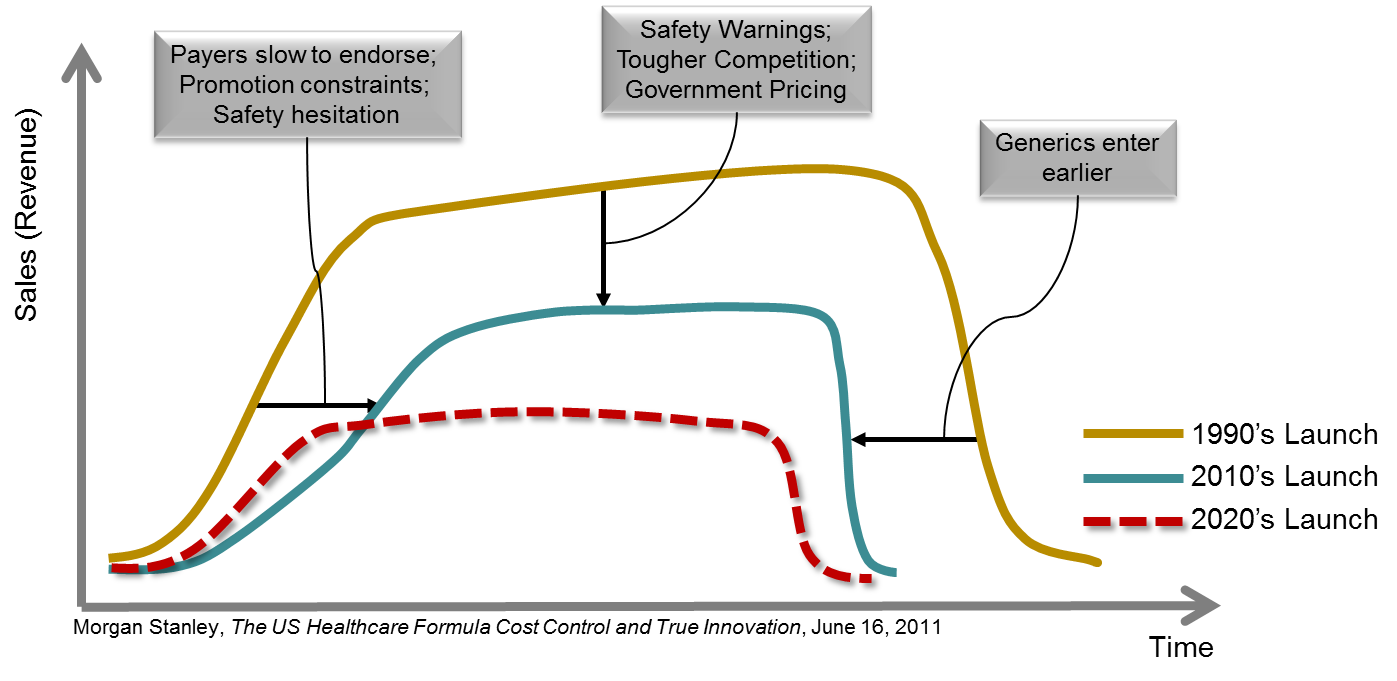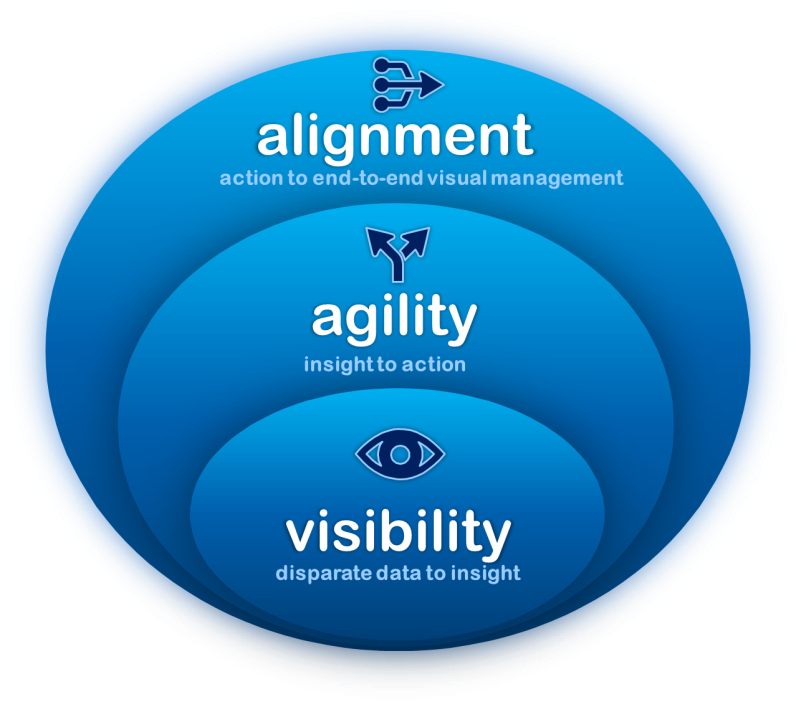The emerging or intensifying industry dynamics that I discussed in an earlier blog post, along with significant shifts in strategy, are having a direct and material impact on the way Life Sciences supply chains must operate. The compounded effect of a host of complexity drivers is creating the need for supply chain transformation. By satisfying the following seven supply chain processes in an integrated manner, Life Sciences teams will be better equipped for success in today’s new, complex world.
- Collaborative launch management – clinical, regulatory and commercial
- Jurisdictional control to respect regulatory needs during planning
- Consensus demand planning across affiliates and countries
- Risk evaluation and recovery to deal with shortages and FDA shutdowns
- Shortage analysis and reporting for FDASIA compliance
- Supply and capacity planning to balance demand across regions
- Expiry management to balance long supply lead times and shifting demand
Let’s take a look at each of these in more detail.
Coordinated Launches
The effective launch of a new product is critically important in any industry, but it is of particular importance in the Life Sciences industry given the long time it takes to bring a new drug to market from discovery through clinical trials and commercialization, with regulatory oversight and conformance throughout the process. When the ‘long tail’ trend is coupled with shorter patent protection, the margin and market captured during the early launch period will be crucial to the recovery of the R&D investment, and thus the pressure to streamline and coordinate clinical trials and the regulatory process with the commercial launch has become intense.
Revenue Trends throughout the Product Life Cycle
Jurisdictional Control
In addition, mandates by regulatory bodies require jurisdictional control of demand satisfaction to account for third country sourcing, validation, and shelf life requirements, amongst others. This requires sophisticated attribute based planning to link demand characteristics to supply characteristics while simultaneously analyzing and reducing expiry risk, especially when inventory postponement strategies are used.
Consensus Demand Planning
For tax, legal, and regulatory reasons, many Life Sciences companies establish semi-independent sales affiliates or subsidiaries in some jurisdictions or sell through third parties. Creating a consensus demand plan across all the affiliates and subsidiaries is not a trivial task. Often, each demand region will forecast in different units (doses, standard packs, grams of API, etc.); almost always in different currencies; at a different cadence (quarterly, monthly, weekly); and over different time horizons. However, manufacturing needs to create a single forecast using a consistent unit of measure so that they can net the demand against available supply and determine future manufacturing capacity needs. To make matters worse, the affiliates are often less than fully transparent about their on-hand inventory.
Risk Evaluation and Recovery (including Shortage Analysis and Reporting)
Current technical architectures do not provide the capabilities needed to address new requirements under FDASIA ̶ reporting obligations for drug shortage issues and more active inspection of production facilities for instance. Information flow is typically limited to EDI exchanges with little or no ability to understand, for example, the impact of an API supply de-commit on future treatment —drug or device— availability in a regulatory region. To do this, Life Sciences companies will require much greater visibility and what-if scenario capabilities to both inspect and affect the global supply chain across Third Party Operators and into the supply base.
Tender Analysis and Management
Many manufacturers lack the required process standardization in manufacturing, inventory and expiry management, and other core business disciplines to make the required trade-offs during tender analysis between demand satisfaction, expiry risk, and constrained capacity utilization, ultimately leading to effective supply and capacity planning to balance demand across regions. Collaboration across the players in the supply chain is often insufficient and inefficient to achieve these tradeoffs. Given the harsh penalties imposed for non-conformance, being able to make the trade-offs to maintain profitability span the life cycle of the tender, not simply the tender acquisition phase.
Expiry Management
Streamlining manufacturing and distribution processes in order to satisfy demand while reducing unit cost is therefore becoming increasingly important in order to maintain profitability, reduce inventories and enhancing competitiveness within the industry. This is especially true given the long manufacturing lead times, often as long as 12-18 months in bio-pharmaceuticals, which lead to the need for expiry risk and stop sell analysis capabilities to balance effective demand satisfaction with efficient capacity utilization.
A New Technology Paradigm for a New World
Legacy demand planning and supply chain planning systems were not designed for today’s complexities, and consequently don’t meet the many challenges that have emerged. As a result, Life Sciences companies are adopting process improvements and new technologies targeted at removing business “silos,” improving collaboration, and increasing productivity. For a true breakthrough, you need an integrated solution. People must be able to leverage a single system with one set of data, supported by comprehensive analysis and decision-making capabilities, no matter what the process or the problem. To keep a finger on the pulse of the supply chain, today’s solutions must:
- Embrace the reality that today’s supply chains are multi-enterprise in nature and, thus, must provide comprehensive visibility into the extended supply chain to regain an understanding of the manufacturing commitments and inventory positions throughout the supply network. Visibility is an essential pre-requisite for effective orchestration of the business.
- Proactively bring to light major variances to plan, identifying not only specific events, but also identifying and quantifying the consequences to customer service, revenue, margin, and a number of other financial and operations metrics, and thereby flagging those that could do most harm to the business.
- Arm decision-makers with scenario simulation capabilities for risk trade-off and response, to model and compare situations quickly and appropriately to ensure a profitable response is put into action. And it must facilitate and incorporate human judgment, since many of the decision requirements are extremely difficult, if not impossible, to capture in a mathematical model — the foundation of an optimization system.
- Foster collaboration for team-based decisions that tap the collective insight of the right people in the organization — those that understand the potential impact of any event and proposed action alternatives.






Leave a Reply